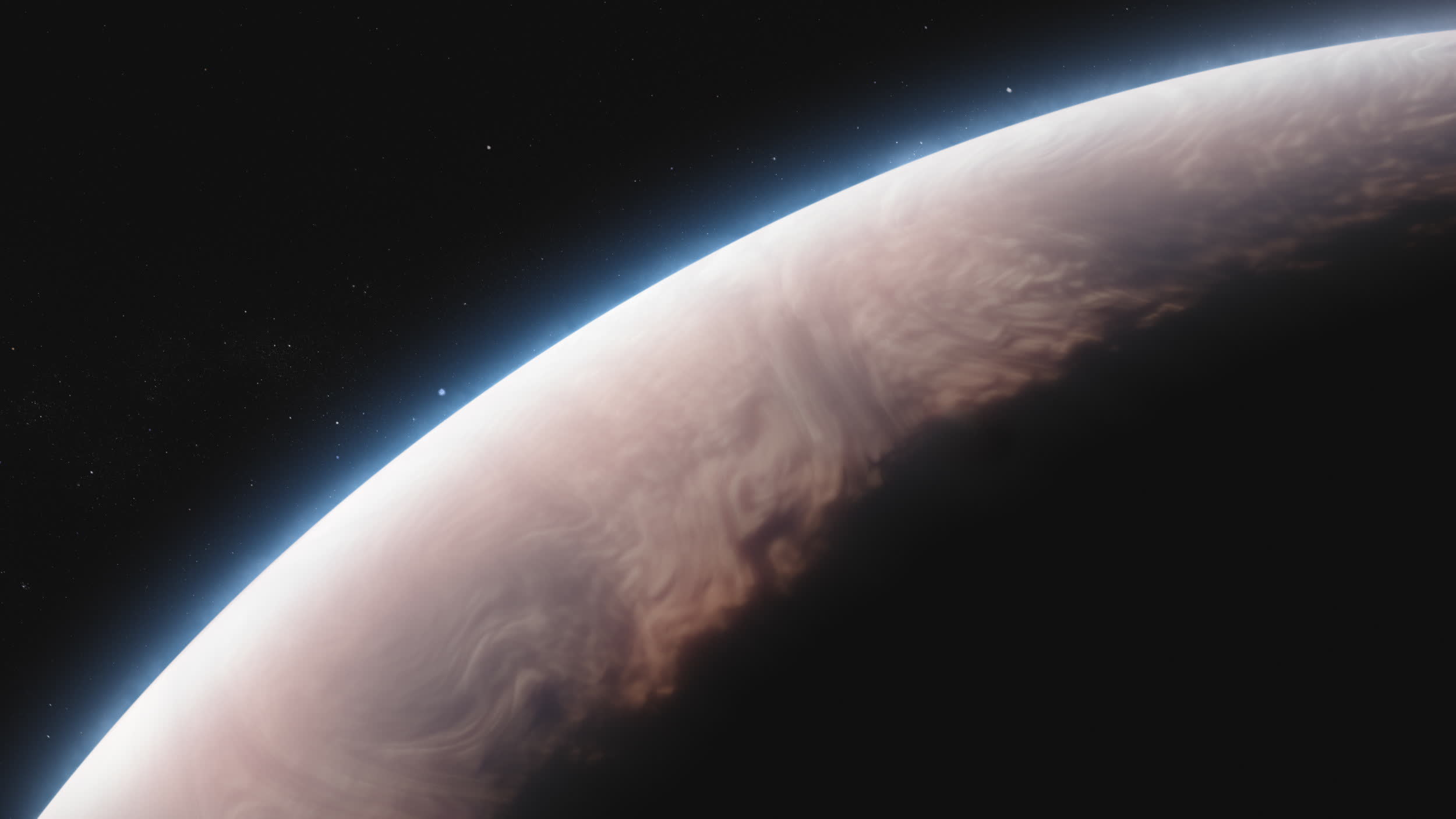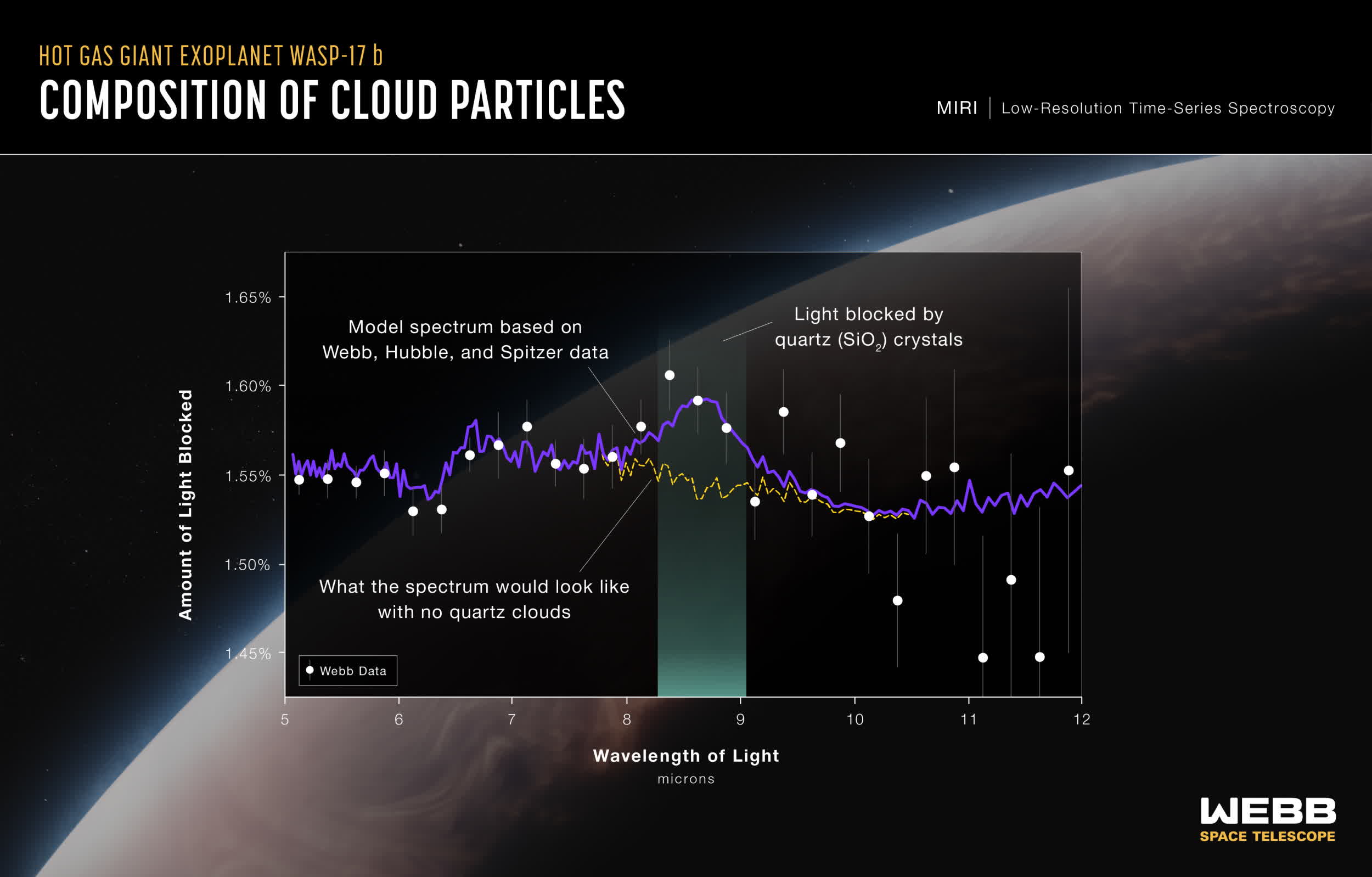In context: WASP-17 b is a "hot Jupiter" type exoplanet that orbits a host star located 1,300 light years away from Earth. This gas giant is one of the three targets in the JWST-powered "Deep Reconnaissance of Exoplanet Atmospheres using Multi-instrument Spectroscopy" (DREAMS) investigations, and it has already furnished researchers with unexpected data.

WASP-17 b's atmosphere is incredibly harsh and consists of aerosols, which are tiny silicon dioxide particles, commonly known as silicate. Silicate is a mineral abundant in silicon and oxygen, frequently found on Earth and other rocky objects in the form of quartz. Silicate grains identified in the atmospheres of exoplanets and brown dwarf stars in the past were typically rich in magnesium, not quartz. However, WASP-17 b has proven to be an exception.
A team of scientists from NASA and the University of Bristol employed the Mid-Infrared Instrument (MIRI) on the James Webb Telescope to examine this massive planet. They initially expected to find magnesium silicates suspended in the planet's dense atmosphere but were surprised to discover pure quartz particles (SiO2) instead. With a volume over seven times that of Jupiter and half the mass, WASP-17 b ranks among the largest exoplanets ever found.
The team conducted observations of the planet for nearly 10 hours, obtaining over 1,275 "brightness measurements" within the infrared range of the electromagnetic spectrum, specifically between five and 12 microns. The researchers employed a technique called "transmission spectroscopy," which entails measuring the impact of a planet's atmosphere as it passes in front of its host star.
JWST instruments detected a distinct "bump" at 8.6 microns, which the scientists explain is a clear indicator of quartz being present in the clouds enveloping WASP-17 b. Additionally, by using observations in visible and near-infrared light collected with the venerable Hubble Space Telescope, the team managed to calculate the size of the aerosol crystals, which turned out to be approximately 10 nanometers in diameter.
The discovery of oxygen-rich silicates in WASP-17 b's atmosphere holds significant importance, as the scientists emphasize. They point out that if we only account for the oxygen in gaseous form and neglect the oxygen stored within minerals like quartz (SiO2), we would significantly underestimate the total oxygen abundance in a planet's environment.
WASP-17 b is one of the three exoplanets chosen for the DREAMS investigation plan, which is designed to collect a "comprehensive" range of observations involving various types of celestial objects. The plan's targets encompass a "hot Jupiter" (WASP-17 b), a "warm Neptune," and a temperate rocky planet.
https://www.techspot.com/news/100535-webb-space-telescope-detects-quartz-crystals-wasp-17.html
